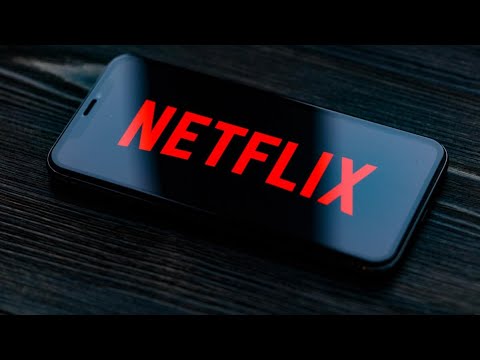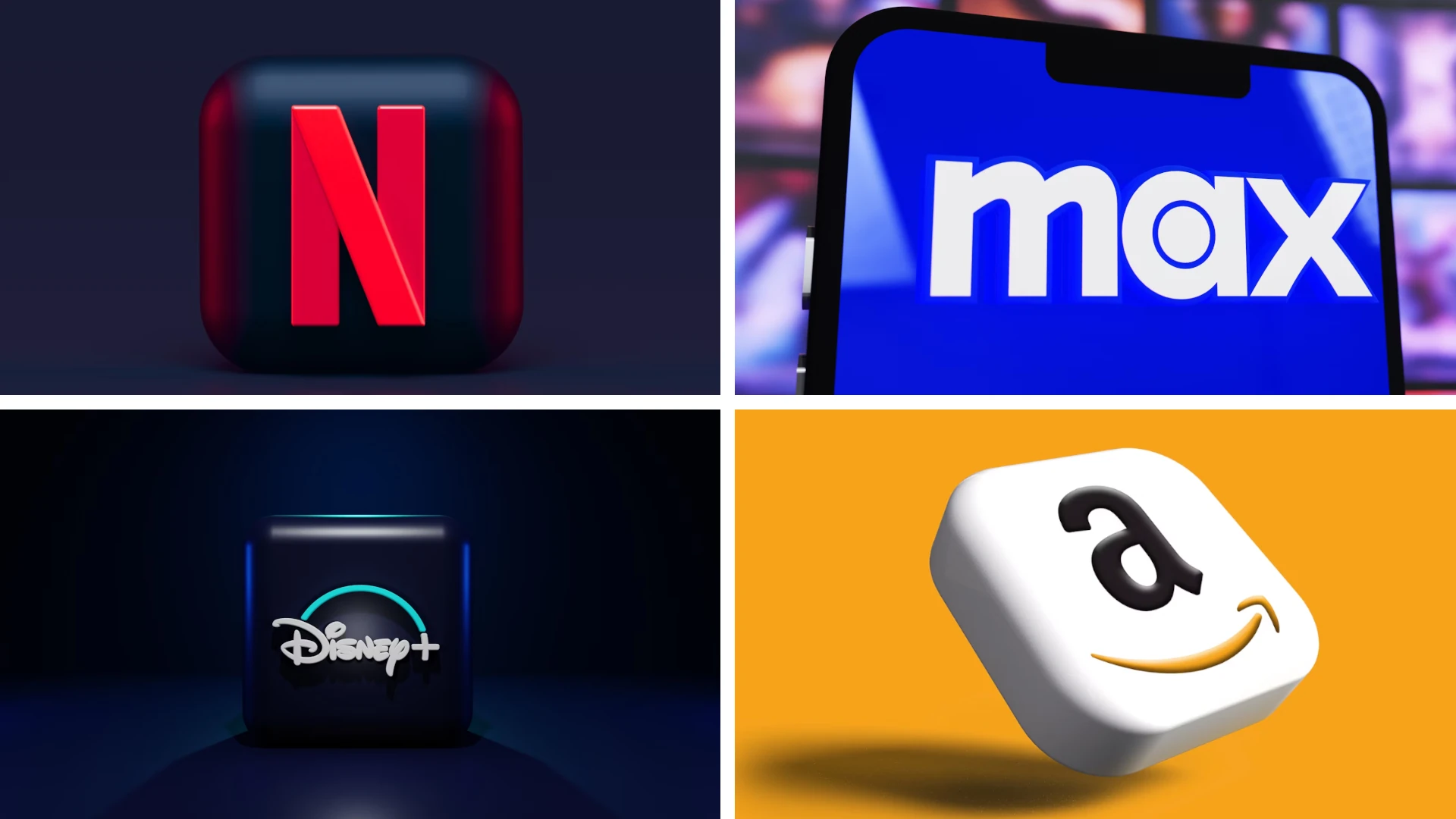Streaming service spending habits in the United States have taken a surprising turn in 2024. Americans are reducing their monthly budgets for digital entertainment platforms. According to a report from Reviews.org, the average U.S. citizen now spends $42.38 per month on streaming services, a significant 23% decrease from the previous year’s $55.04.
This shift reflects a growing trend of budget-conscious consumers reassessing their entertainment expenses. Many are opting for cheaper ad-supported tiers or reducing the number of subscriptions they maintain. The average American now subscribes to about 2.9 streaming services each month, indicating a more selective approach to content consumption.
Despite the overall decrease in spending, some households continue to invest heavily in streaming. The percentage of households spending over $100 monthly on these services has actually increased by four percentage points since January 2021. This suggests a divergence in consumer behavior, with some cutting back while others expand their streaming budgets.

Understanding the Shift in Streaming Habits
The Changing Landscape of Streaming
Americans are changing how they spend on streaming. Recent data shows a dip in spending. This change is due to several factors. People are more aware of their budgets. They are also tired of having too many choices. The rise of cheaper, ad-supported plans also plays a role.
Key Spending Trends
Reports from early 2024 show a significant change in how much people spend on streaming. One report showed a drop of almost 25% in spending. The average person now spends about $42 each month on streaming. This number is down from previous years.
Why the Change?
Several things explain this shift:
- Streaming Fatigue: People feel overwhelmed by the many streaming options. It’s hard to keep up with all the new shows and movies on different platforms.
- Cost of Living: With prices going up on many things, people are cutting back on extra costs like streaming.
- Ad-Supported Options: Many services now offer cheaper plans with ads. This lets people save money while still watching their favorite shows.
- Subscription Choices: People are choosing fewer subscriptions. They pick only the services they use the most.
Comparing Streaming Options
Choosing the right streaming service can be tricky. Here is a table that compares some popular choices:
| Service | Monthly Cost (Basic Plan) | Key Features | Pros | Cons |
|---|---|---|---|---|
| Netflix | $6.99 (with ads) | Wide variety of shows and movies | Large library, original content | More expensive ad-free plans |
| Hulu | $9.99 (with ads) | Next-day TV shows, movies | Good for current TV viewers | Ad-free plan is costly |
| Disney+ | $9.99 (with ads) | Disney, Pixar, Marvel, Star Wars content | Great for families | Limited content outside its core brands |
| Max | $9.99 (with ads) | HBO, Warner Bros., and DC content | High-quality shows and movies | Higher cost than some others |
Making the Best Choice
The best streaming service for you depends on what you like to watch and how much you want to spend. Think about what shows and movies you enjoy. Consider if you are okay with watching ads to save money. You can also try free trials to test different services before you subscribe.
The Impact of Bundling
Many companies now offer bundles. These bundles combine several services for one price. For example, some phone companies offer bundles with streaming services. These bundles can save you money if you use all the services included.
Future of Streaming
The streaming world keeps changing. Companies are always trying new things to attract and keep customers. We may see more changes in pricing, content, and how we watch TV in the future.
Cord-Cutting and Streaming Devices
Many people who drop cable (cord-cutters) use streaming devices. These devices connect to your TV and let you watch streaming services. Some popular devices include Roku, Amazon Fire Stick, and Apple TV. These devices can make it easier to watch streaming content on your TV.
Key Takeaways
- Americans reduced streaming service spending by 23% in 2024 compared to 2023
- The average U.S. household now subscribes to 2.9 streaming services monthly
- Some consumers are opting for cheaper ad-supported tiers to manage costs
Trends in Streaming Service Spending
The entertainment landscape has shifted dramatically, with streaming services becoming dominant, but recent trends show a decline in spending on subscriptions, dropping nearly 25% in early 2024. The average American now spends about $42 monthly on streaming, down from previous highs. Contributing factors include “streaming fatigue,” rising living costs, and the availability of more affordable ad-supported tiers. This change in consumer behavior is prompting the streaming industry to adjust its strategies to stay competitive.
Americans are adjusting their streaming budgets in 2024. Economic factors, subscription changes, and market shifts have influenced consumer spending habits in the digital entertainment sector.
Economic Factors Impacting Streaming Expenditure
The average U.S. household spent $42.38 monthly on streaming services in 2024, down from $55.04 in 2023. This 23% decrease reflects growing price sensitivity among consumers. Rising living costs have prompted many to reassess their entertainment budgets.
Inflation and economic uncertainty have led to more cautious spending. Some viewers are opting for ad-supported tiers or sharing accounts to reduce costs. Others have completely cut certain subscriptions to manage expenses.
Changes in Streaming Service Subscriptions
The average American now subscribes to 2.9 streaming services per month. This number has slightly decreased from previous years. Consumers are becoming more selective, often rotating subscriptions based on content releases.
Some trends include:
- Increased cancellations after watching specific shows
- Greater use of free trials
- More frequent pausing of subscriptions
Viewers are also showing a preference for bundled services that offer better value.
Streaming Service Market Analysis
The streaming market is evolving in response to consumer behavior. Services are adapting their strategies to retain subscribers and attract new ones. Price hikes have been met with mixed reactions, leading to some subscriber losses.
Key market trends:
- Introduction of ad-supported tiers
- Focus on original content to differentiate offerings
- Mergers and consolidations among smaller platforms
Despite the overall decrease in spending, a segment of consumers is willing to pay more. The share of households spending over $100 monthly on streaming increased by four percentage points compared to January 2021.
Influences on Streaming Service Usage
Several factors shape how Americans use streaming services in 2024. These include changing viewer preferences, technological advancements, and the rise of alternative entertainment options.
Consumer Preferences and Content Availability
Netflix and Disney+ lead the streaming market with their vast libraries of original and exclusive content. Viewers now prioritize quality over quantity, favoring platforms that offer unique shows and movies.
Ad-free options remain popular, but many users accept ad-supported tiers to reduce costs. This shift has led streaming services to refine their advertising strategies, creating more targeted and less intrusive ads.
Content discovery has become a key factor in user satisfaction. Streaming platforms invest in AI-powered recommendation systems to help viewers find new shows and movies tailored to their interests.
Technological Impact and Accessibility
Improved internet speeds and wider 5G coverage have enhanced the streaming experience. Users can now watch high-quality video on mobile devices without buffering issues.
Smart TVs and streaming devices make accessing content easier than ever. Voice-controlled remotes and intuitive interfaces simplify navigation across multiple streaming apps.
Mobile apps for streaming services have become more feature-rich. They offer offline viewing options and personalized watchlists, catering to on-the-go users.
Alternatives to Streaming Services
Traditional cable and satellite TV providers have adapted to compete with streaming platforms. They now offer their own streaming options and bundle internet services with content packages.
Free, ad-supported streaming TV (FAST) services have gained popularity. Platforms like Pluto TV and Tubi offer a mix of live channels and on-demand content without subscription fees.
Social media platforms have expanded into video content. TikTok, YouTube, and Instagram now compete for viewers’ attention with short-form videos and original series.
Gaming has emerged as a significant alternative to passive video consumption. Many users split their screen time between streaming and interactive entertainment options.
Frequently Asked Questions
Streaming service expenditures and habits have shifted significantly in 2024. Consumer preferences, economic factors, and industry adjustments have reshaped the streaming landscape.
How have typical household expenditures on streaming platforms shifted in 2024?
The average American spent $42.38 per month on streaming services in 2024. This represents a 23% decrease from the previous year’s average of $55.04 per month.
Many households have reevaluated their streaming budgets. Some have opted for fewer subscriptions or cheaper plan tiers to reduce costs.
What factors contribute to the decline in spending on streaming services?
Economic pressures have led consumers to cut back on non-essential expenses. Rising costs of living and inflation have forced many to prioritize their budgets.
Subscription fatigue has set in for some users. The proliferation of streaming options has overwhelmed consumers, leading them to be more selective.
Price increases by major streaming platforms have also pushed some subscribers to cancel or downgrade their plans.
How has the average number of streaming subscriptions per household changed in 2024?
Americans subscribed to an average of 2.9 streaming services per month in 2024. This number has remained relatively stable compared to previous years.
Some households have consolidated their subscriptions. They’ve chosen to keep only their most-used services and drop others.
Which streaming services have experienced a loss in subscribers this year?
Specific subscriber losses for individual streaming services are not provided in the search results. Industry-wide trends show a general decline in spending and subscriptions.
Smaller or niche streaming services may have been more vulnerable to cuts. Consumers often prioritize larger platforms with more diverse content offerings.
What trends are emerging in streaming service profitability in recent years?
Streaming services have faced challenges in maintaining profitability. Increased competition has led to higher content production costs.
Some platforms have introduced ad-supported tiers to boost revenue. This strategy aims to attract price-sensitive customers while maintaining income.
What adjustments are streaming companies making in response to changing consumer spending habits?
Many streaming services are diversifying their pricing models. They now offer multiple subscription tiers, including cheaper ad-supported options.
Content strategies are being refined. Platforms are focusing on producing high-quality, exclusive content to retain subscribers.
Some companies are exploring bundled services. These packages combine streaming with other products or services to provide more value to consumers.







